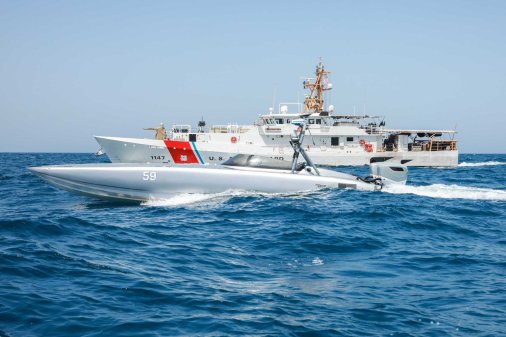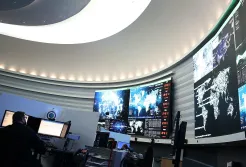New warrant officers poised to improve readiness of Air Force cyber mission force teams

NATIONAL HARBOR, Md. — The reintroduction of warrant officers in the Air Force for the first time in over 65 years will help improve the overall readiness and longevity for the teams it presents to U.S. Cyber Command, according to a top commander.
The Air Force announced in February that it was bringing the warrant officer cadre back after they were phased out in 1958. It will start with warrants for IT and cyber. Those cyber warrants will primarily help fill out the ranks of the cyber mission force. The first cohort is slated to graduate in early December and get on mission later that month or early January.
Each of the military services is responsible for providing personnel for a set number of cyber mission force teams to Cybercom, which then employs those forces in operations for geographic combatant commands. The new warrant officers are expected to help with the longevity of work roles within those teams.
“It’s the longevity piece of it and the relationships that they build inside of those spaces. Everything’s unique, but they’re in some very unique spaces with the mission partners that we have, whether it’s the intelligence community or whether it’s mission partners or whether it’s capability developers,” Col. John Picklesimer, commander of 67th Cyber Wing, said in an interview at the AFA Air, Space and Cyber conference. “They’ve built those relationships with those folks, and a lot of this business is based on trust. Now having those folks that are longer term in those seats, that build out their capabilities and their skill sets, then also have the trust of those people — that is going to pay dividends for us, I believe.”
The cyber mission force as a whole has faced readiness issues, due in large part to the disjointed and non-uniform ways that each service presents forces to Cybercom. In many cases, the readiness issue has come down to how services’ personnel policies work in which a cyber warrior undergoes lengthy and expensive training for their work role, but then is cycled out after a few years to perform a different cyber job outside the cyber mission force.
Now, these warrant officers can perform these work roles within the cyber mission force for the duration of their careers and have a path for promotion and career advancement.
“The exploitation analyst is a good example of that where they would move into the CMF and maybe move back into another part of another wing, for example, but their training changes and the qualification requirements change based on the new job they’re going into,” Picklesimer said. “By having them be warrant officers in this space, we don’t lose that time and effort that we put into training these highly talented folks.”
However, he noted that given the roles are so new — especially since the first cadre hasn’t even graduated yet — there will be challenges developing the career paths for warrant officers in the Air Force.
“The piece that we’re really going to have to work on now that we’re getting them in there is, how do we do the professional development of a warrant officer? We don’t really have that model inside of the Air Force to look after,” he said.
The service has received help from the Army and Navy consulting on how they’ve utilized their cohort of warrant officers on their cyber mission force teams.
“We actually brought in a couple of the Army warrant officers, a few Navy warrant officers, really, to help advise on where we would put them in the force, like where they fit inside the different echelons of the CMF, whether it’s on the team level, whether it’s at the headquarters level in the wing perhaps, or whether it’s on our headquarters staff for doing that more operational, strategic-level planning. They were able to help advise on the good location for those and how they’re using those space,” Picklesimer said. “The Army or the Navy how they use their warrant officers … for that professional development, they’ve been great partners already in helping us build out that plan.”
While Picklesimer said the warrant officer cohort is poised to improve the readiness of the Air Force cyber mission force over time, immediately there will likely be a dip given the personnel that volunteered and were selected as the first warrants came from the 67th Cyberspace Wing and its cyber mission force teams.
Once graduated, the majority of the warrants will come back to that wing.
Cybercom’s chief has reported improved numbers in cyber mission force readiness across all the services in recent months.
For the 67th Cyberspace Wing, Picklesimer said officials are engaged in quarterly deep dives for readiness projections.
“It forces our subordinate commanders to really look at their force structure and who they have on teams, and really call their shot and what they’re going to do for the next three months to make sure that they [contemplate], for example, ‘I’m going to create two more senior [interactive on-net operators], I’m going to create two more reporters that are qualified, and this is going to make my readiness come to a certain level,’” he said. “By doing those projections, it’s really enabled us to understand ourselves better and really there’s optimizing the training paths for our 16 different work roles. As you can imagine, with 16 different work roles, there’s 16 different training pipelines, there’s 16 different sets of courses and they’re all different. For us to really put the time and effort into understanding those at a very deep level, it’s enabled us to make big gains in our readiness over the last year.”






